Bulbs
Flower Basics
Flower Beds & Specialty Gardens
Flower Garden
Garden Furniture
Garden Gnomes
Garden Seeds
Garden Sheds
Garden Statues
Garden Tools & Supplies
Gardening Basics
Green & Organic
Groundcovers & Vines
Growing Annuals
Growing Basil
Growing Beans
Growing Berries
Growing Blueberries
Growing Cactus
Growing Corn
Growing Cotton
Growing Edibles
Growing Flowers
Growing Garlic
Growing Grapes
Growing Grass
Growing Herbs
Growing Jasmine
Growing Mint
Growing Mushrooms
Orchids
Growing Peanuts
Growing Perennials
Growing Plants
Growing Rosemary
Growing Roses
Growing Strawberries
Growing Sunflowers
Growing Thyme
Growing Tomatoes
Growing Tulips
Growing Vegetables
Herb Basics
Herb Garden
Indoor Growing
Landscaping Basics
Landscaping Patios
Landscaping Plants
Landscaping Shrubs
Landscaping Trees
Landscaping Walks & Pathways
Lawn Basics
Lawn Maintenance
Lawn Mowers
Lawn Ornaments
Lawn Planting
Lawn Tools
Outdoor Growing
Overall Landscape Planning
Pests, Weeds & Problems
Plant Basics
Rock Garden
Rose Garden
Shrubs
Soil
Specialty Gardens
Trees
Vegetable Garden
Yard Maintenance
How to Add Incredible Fall Color with a Chinese Dogwood Tree
How to Add Incredible Fall Color with a Chinese Dogwood Tree. Chinese dogwood... it flowers later and longer than a native dogwood, and has big creamy star-shaped flowers. It's full and green all summer, but it saves the greatest show for fall. As the photo shows, what a colorful display, all on one branch! I'll explain how to add incredible fall...
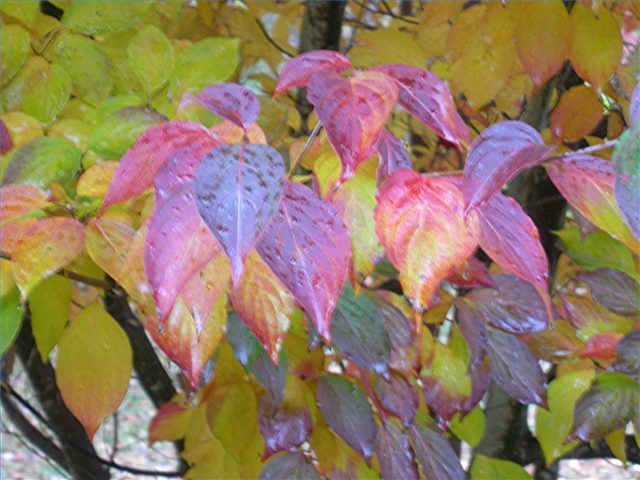
Chinese dogwood... it flowers later and longer than a native dogwood, and has big creamy star-shaped flowers. It's full and green all summer, but it saves the greatest show for fall. As the photo shows, what a colorful display, all on one branch!
I'll explain how to add incredible fall color with a Chinese dogwood tree and what kind of care it needs year-round.
Things You'll Need
Young Chinese dogwood tree
Location with partial shade and well-drained soil
Recognize the Species - Not the Same as a Native Dogwood
Native American dogwood trees (Cornus florida) have white to pink flowers with rounded edges as shown in the photo here, grow 30 to 40 feet tall, and have small, bright red berries.
The Chinese dogwood tree (Cornus kousa), is native to China, Japan and Korea, is smaller than its American counterpart, has star-shaped (pointed-edge) creamy flowers, with ping-pong size clusters of fruit.
The Chinese dogwood has better resistance to disease than native American dogwoods and is more hardy in cold temperatures.
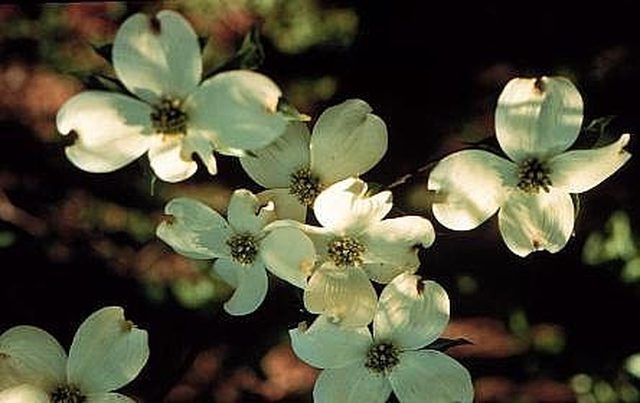
Observe the Flowers
Chinese dogwoods bloom about 3-4 weeks later than native dogwoods. The flowers are 4-5" in diameter and prolific, very dense. The tree remains in flower 6 weeks or longer.
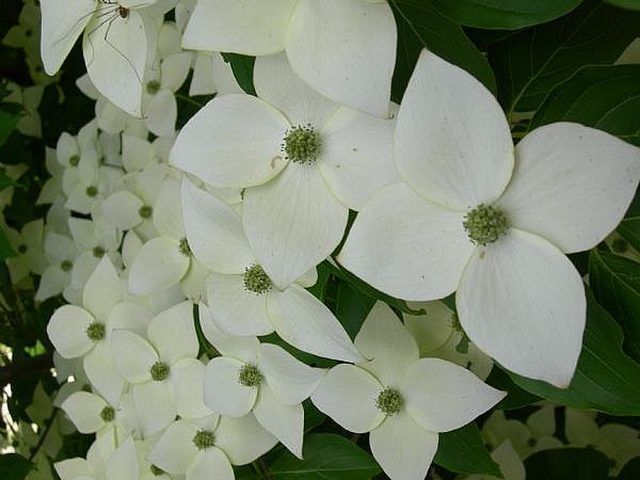
Look at the Fruit
The fruit that hangs from Chinese dogwood is red in color, the size of a ping-pong ball, and has the appearance of a hard raspberry. The fruit is considered edible when ripe, is said to taste like melon and to have herbal wellness properties.
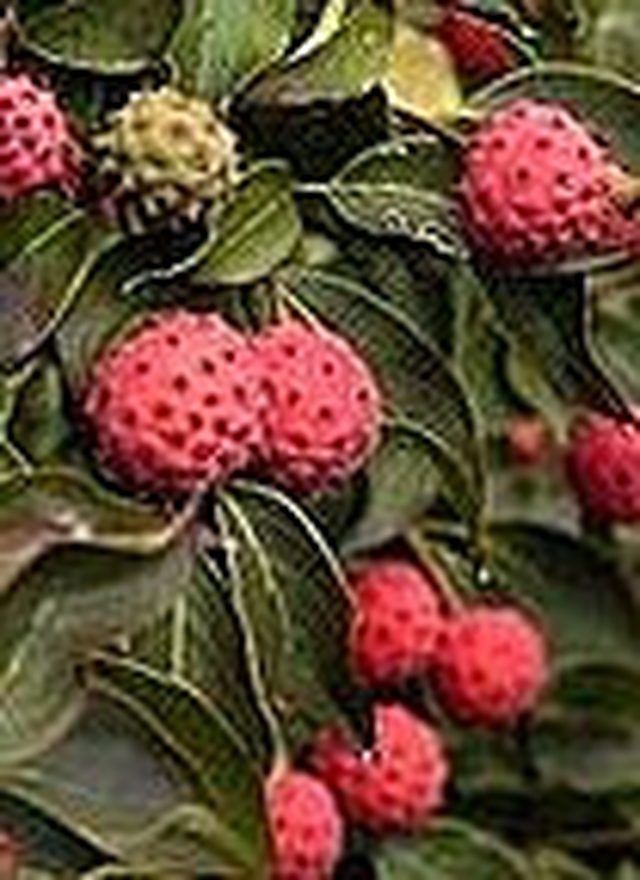
Enjoy the Fall Foliage
The fall show is spectacular and long-lasting. A blaze of colors in the pink, red, purple, gold range, as shown by the top photo (a close-up) and this one.
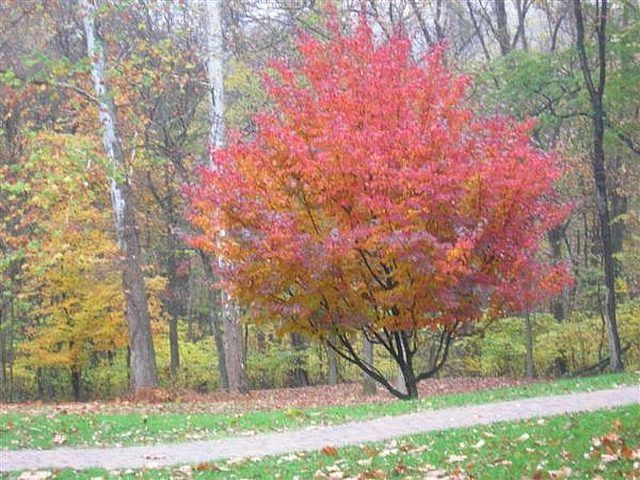
Take Care of Its Needs
Give the Chinese dogwood a partially shady location in rich, moist soil that is well drained. Be sure to water it during especially hot or dry periods. Prune as needed and thin out branches selectively if dense growth occurs in parts of the tree canopy.
